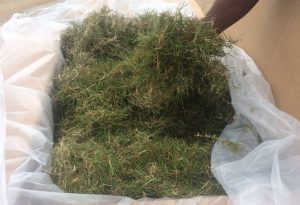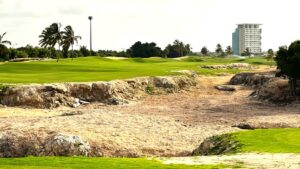The COVID-19 pandemic meant that the Marco Simone Golf & Country Club, outside Rome, the Italian capital, has had to wait a year longer than planned for its moment in the sun. Though it has been totally rebuilt in the interim, the course was awarded the 2022 Ryder Cup back in December 2015. The 2020 event was planned for Whistling Straits in Wisconsin, but 2020 was not a great year for international sport (or travel of any kind!), and it was put back a year – as, of course, was the 2022 playing.
Marco Simone was originally designed by American architect Jim Fazio and opened for play in 1991. The needs of the Ryder Cup, though – a Ryder Cup course has to be able to accommodate 50,000 fans on the property, with, for two of the three days of the event, only four matches ever on the course at the same time – meant that it had to be rebuilt from the ground up. Dave Sampson of European Golf Design – the firm co-owned by the DP World Tour – was appointed to handle the redesign. Work began in August 2018 and was carried out by Irish contractor SOL Golf. The new-look course reopened in October 2020 with the full 18 in play for members in January 2021, and it made its tournament bow by hosting the Italian Open in September 2021. The extra year’s wait imposed by the Covid pandemic has meant that Marco Simone had another twelve months to grow in and reach optimum conditions – which is to say, that the turfgrasses supplied by Atlas Turf and its partner Pure Seed had more time to mature.
We do our breeding and testing in multiple locations with different climates and different pressures. That’s why our grasses do so well in different conditions.
Crystal Rose-Fricker, President of Pure Seed and Pure-Seed Testing, Inc.
Almost all of the turfgrasses at Marco Simone were developed by Pure-Seed Testing and co-marketed by Pure Seed and Atlas Turf. The greens are Pure Distinction creeping bentgrass; tees, fairways, approaches and collars feature Pure Dynasty seeded paspalum, and the rough areas are Pure Links, a proprietary blend of tall and fine fescues. “There are also some tall fescues around the bunkers. The roughs have been performing really well in the extreme heat of this summer,” says Crystal Rose-Fricker, president of Pure-Seed Testing.
“We are not breeding in one location – we do our breeding and testing in multiple locations with different climates and different pressures. That’s why our grasses do so well in different conditions,” says Rose-Fricker.
It is a massive vote of confidence to see an event of the status of the Ryder Cup played on our turfgrasses.
John Holmes, President of Atlas Turf International
Architect Sampson had experience with Pure Dynasty on the Royal Greens project in Saudi Arabia, and this, combined with the quality playing surface it delivers and the grass’s excellent deep green coloration in the fall season in which the Cup takes place, drove the decision to use paspalum. The choice of paspalum raised some eyebrows, but the grass’s ability to cope well with irrigation water that is less than ideal in quantity and quality won the day. And the run-up to the Ryder Cup has proved the decision to be a wise one. The Rome area has an extremely varied climate, with frost not uncommon in the winter and hot summers, making it a challenging environment in which to grow fine turf. This summer, southern Europe has been especially hot, with temperatures above 40 Celsius (104F) not uncommon, making the decision to use a warm season grass like paspalum look remarkably prescient. And the Pure Distinction has proved that, although bentgrasses are cool season strains, it has the ability to stand up to extreme heat better than almost any other comparable grass.
“It is a massive vote of confidence to see an event of the status of the Ryder Cup played on our turfgrasses,” says Atlas Turf president John Holmes. “No matter the outcome of the matches, we’ll leave Rome feeling like winners.”
Photo credit: Jacob Sjoman



